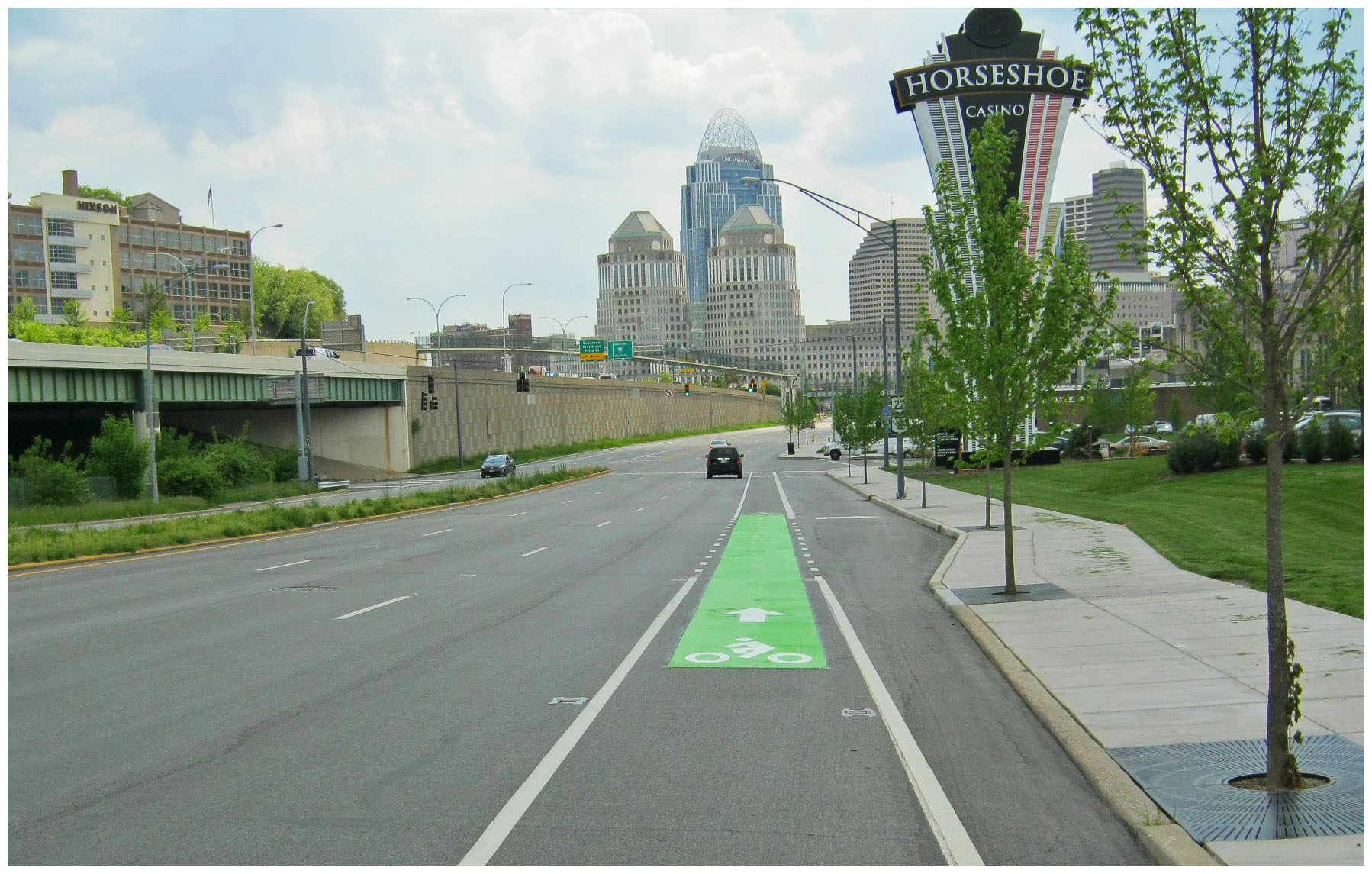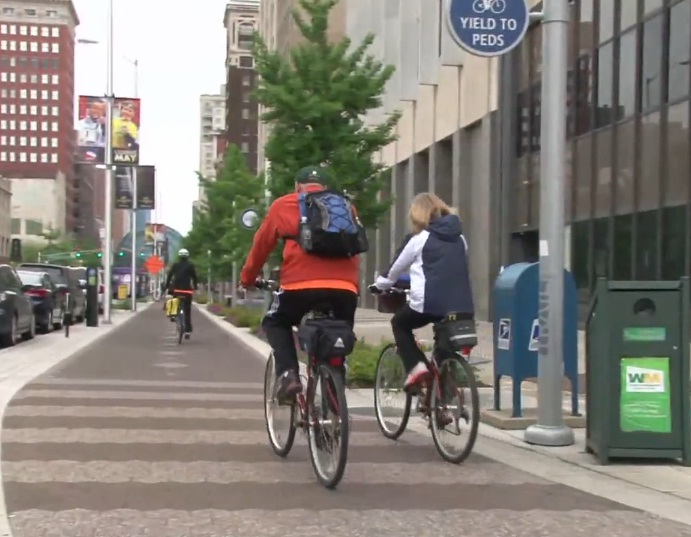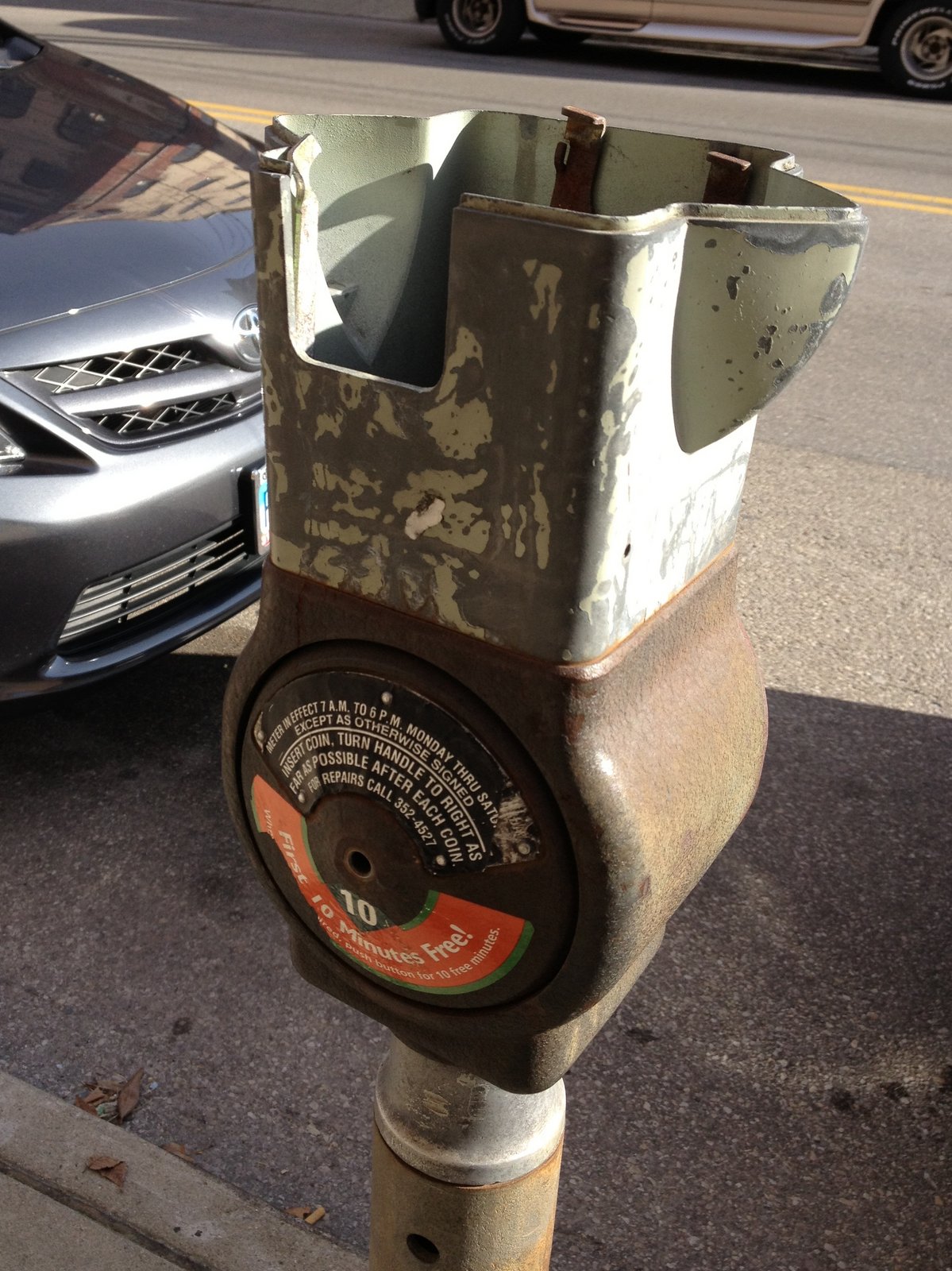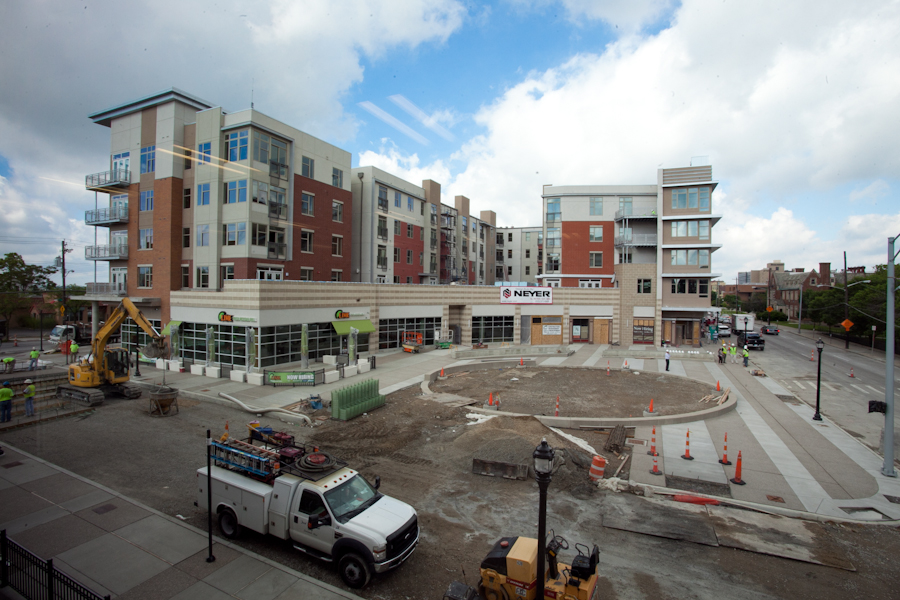The City of Cincinnati kicked off its annual street rehabilitation program last week. This year’s program will focus work on 113 segments of roadway in 22 neighborhoods.
According to officials within Cincinnati’s Department of Transportation & Engineering (DOTE), the 2013 Street Rehabilitation Program will include work that replaces layers of deteriorated paving with new surfacing, fixes problem areas where needed, and then install new curb work as necessary.
While the primary focus of the program is to rebuild streets and curbs, it also offers the city the opportunity to implement components of its city-wide bike plan.

Recently installed bike lane with green markings on Gilbert Avenue heading south into the central business district. Image provided.
“Installing bike lanes in conjunction with the street rehabilitation program really gives us the best bang for our buck,” explained Mel McVay, senior city planner with the DOTE. “In this case, city council has already allocated money for repaving the street, so the cost to the bike program of the additional stripe for the bike lane is really minimal.”
Through this program, five streets will see new bike facilities installed over the course of the coming months as streets are rebuilt through the summer and fall.
The biggest stretch of roadway that will see a new bike facility installed under this program will be Winton Road in Spring Grove Village, where a 1.8-mile stretch will see a shared path put in place when the roadway is rebuilt.
In the West End and Queensgate, buffered bike lanes will be installed along Bank Street from Linn Street to Dalton Avenue. Meanwhile, bike lanes will be installed on Dalton Avenue between Linn Street and Eighth Street, and on Western Avenue between Hopkins Street and Findlay Street.
McVay says that the “buffered” bike lanes will include a striped buffer area of three to four feet separating the travel lane and the bike lane. Within the city, both Beechmont Avenue and E. Mitchell Avenue currently include buffered bike lanes.
The final piece of bike-related work to be completed as part of the 2013 Street Rehabilitation Program will be a climbing lane on Woolper Avenue between Vine Street and Clifton Avenue.
Additional bike projects are in the works besides the five to be completed as part of this program, but the lack of funding and political will continues to serve as barriers to doing more.
With the improvements on-tap for the remainder of this year, the City of Cincinnati will be just less than halfway toward its goal of installing 104 miles of on-street bike facilities by 2015
The Bicycle Transportation Plan, which was adopted in June 2010, includes an ultimate goal of installing 454 miles of on-street and off-street bike facilities by 2025.
“At this point, working with the street rehabilitation program is really our best opportunity to significantly increase the number of bike lanes around the city,” McVay concluded.






